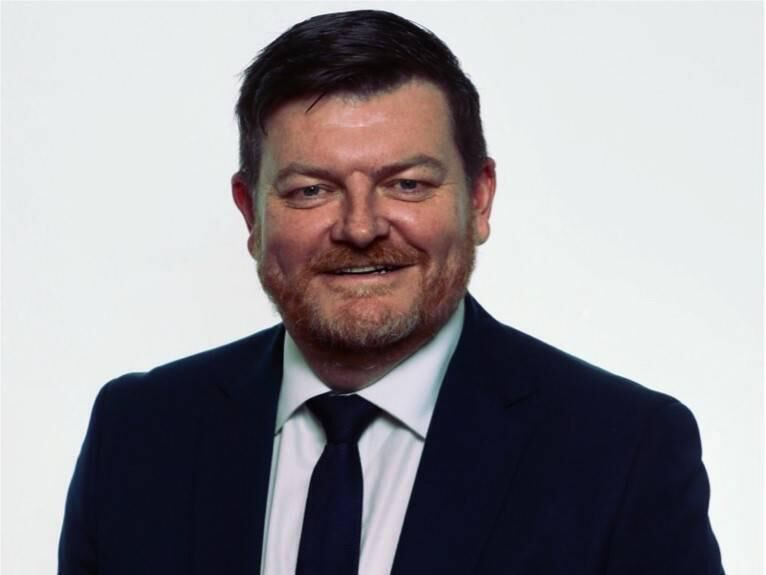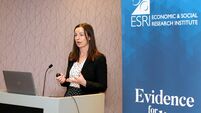Shifting sands of retirement: We’re all living longer but this extra living has to be paid for

According to the CSO, there’s been a 44% increase in the number of retired people since 2011.
The Central Statistics Office (CSO) has just published its pensions coverage report for 2023. They found that in the last quarter of the year, 68% of workers had some form of pension coverage outside of the state pension. That’s up two percentage points on the same period in 2022.
The latest Census shows there’s been a 44% increase in the number of retired people since 2011. We’re all living longer, which is great, but all this extra living has to be paid for. Moreover, the latter stages of life tend to require greater medical intervention, and healthcare inflation is rampant. VHI, Laya and Irish Life Health all announced significant premium hikes in the last two months.
Despite that slight improvement, Mark Reilly of Royal London Ireland is concerned by the fact that 32% of workers have no private pension coverage and will therefore be solely dependent on the state pension in retirement. He points out that the maximum state pension is currently €277.30 a week for those aged 66 to 79, and €287.30 a week for those aged 80 or older.
He says: “Ireland’s increasing ageing population, along with the recent trend of people hitting key milestones later in life, has made it even more important for people to build up an adequate retirement income before they retire, to provide for financial security in later life. Having a private pension is essential to achieving this.”

As Reilly points out, on average, Irish people are hitting life milestones much later than they used to. “The median age of a house buyer is now 39, up from 35 in 2010. This means that more people are likely to see mortgage debt follow them into their retirement years and in turn eat into their retirement income.
"Recent research from Royal London Ireland found that one in 10 mortgage holders anticipated they would still be paying off their loans into their seventies. It is imperative that private pension coverage in Ireland is improved, otherwise, a significant portion of the population could struggle financially when they reach retirement.”
Mr Reilly is also worried by the fact that the CSO report also shows that almost one in four (24%) of workers who are not in a work pension are in that position because they have chosen not to join their employer’s pension scheme. “This is worrying and is usually a missed opportunity for workers. If you join a work pension scheme, it will be easier to build up the pension pot you need to financially support yourself during retirement.”
He also zeros in on the finding that about one in six workers who are not members of their employer’s pension scheme believe they are not eligible to join. “We would be hopeful that when auto-enrolment begins, it will give this cohort of workers the much-needed chance to save up for their retirement.”
Auto-enrolment is the long-awaited pensions initiative whereby workers are automatically enrolled in a pensions scheme, and subsequently given the opportunity to opt out if they don’t wish to remain.
Glenn Gaughran, Head of Business Development with Independent Trustee Company, is also anxious to see auto-enrolment begin. He says that possibly the greatest predictor of whether a worker will have a private pension or not is if their employer offers one.
“Unfortunately, the CSO Pension Coverage report shows that more than half of the workers who are not saving for a pension are in that position because membership of a company pension scheme is not an option for them. Auto-enrolment should hopefully help plug that gap as it is aimed at private sector workers aged between 23 and 60 who earn €20,000-plus a year and who are not already part of a work pension scheme.
“The start date for the Government’s auto-enrolment scheme has been pushed out to the second half of 2024. It is important that this start date is not pushed back any further. If the Government is serious about increasing private pension coverage in this country, auto-enrolment must be rolled out sooner rather than later.”
Mr Gaughran believes that there are far too many people relying, and expecting to rely, on the state pension in retirement.
Over two-thirds of workers have some form of pension cover outside of State Pensionhttps://t.co/zn9lvOwHi2#CSOIreland #Ireland #Pensions #PensionCoverage #Earnings #Employment pic.twitter.com/iplMzsO4Zs
— Central Statistics Office Ireland (@CSOIreland) February 26, 2024
He points out that having to get by on €277.30 a week could be a huge financial shock to many people. There will be those who simply won’t be able to make ends meet in retirement on that kind of money. Moreover, not everyone is eligible for the full state pension.
Mark Reilly of Royal London Ireland also recommends that people who believe they are not eligible to join a pension scheme double-check this with their employer. He points out that many people, particularly part-time workers, incorrectly believe they’re not eligible to join a company pension scheme.
Personal Retirement Savings Accounts (PRSAs) are an option for those who don’t have access to a company pension scheme or for those who wish to supplement their company pension.
Glen Gaughran says that those saving into a PRSA should get up-to-speed on recent improvements to the tax rules around PRSAs. These tax changes have made it much easier to build up a reasonable pension pot with PRSAs. This is because apart from affordability, the only limit on large employer contributions to PRSAs now is the €2m Standard Fund Threshold (SFT) — the ceiling on the total capital value of pension benefits that an individual can draw from tax-relieved pension arrangements.
Mr Gaughran says: “The Government is currently reviewing the SFT and it is important that the right decisions are made here so that people can build up an adequate retirement income. Given the high wage and living cost inflation of late, and the fact that the SFT has been unchanged for 10 years, we believe the current SFT of €2m should be increased.”
Pensions are of course just one way of funding retirement. A Competition and Consumer Protection Commission (CCPC) survey from last year found that 57% of us plan to use cash savings to support retirement. As pensions are long-term investments, and pension contributions are subject to tax relief, money put into a pension will usually go further than the same amount put into savings.
The key thing however is to make some provision for retirement, and when you do, conduct yearly checks to make sure it’s up to standard.
“It’s very positive that two-thirds have started a pension,” says Grainne Griffin of the CPCC, “and that number will grow once auto-enrolment is introduced. However, it’s important that people don’t see their pension as a box to tick and forget about — you need to make sure your pension is enough to fund the retirement you want.”













